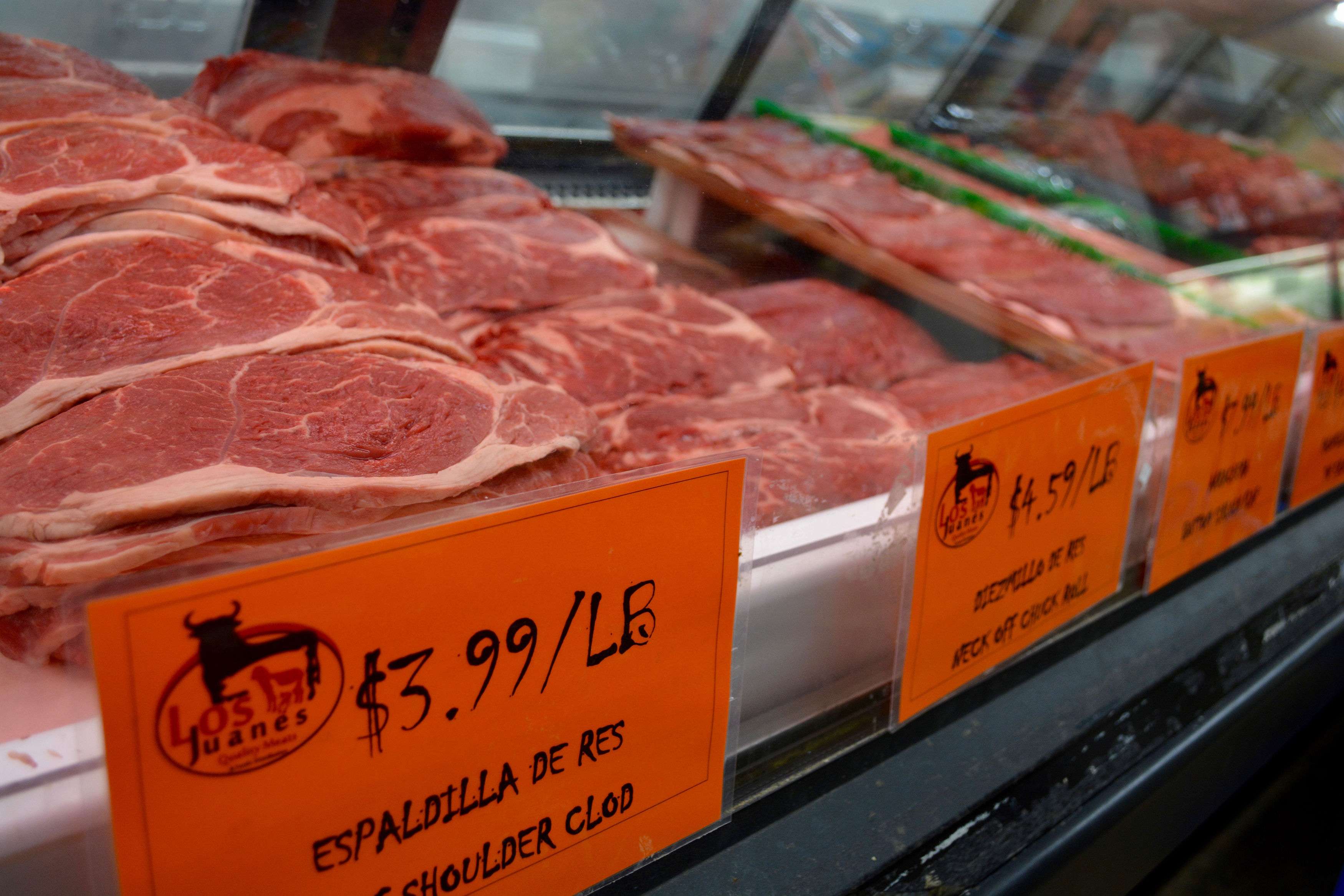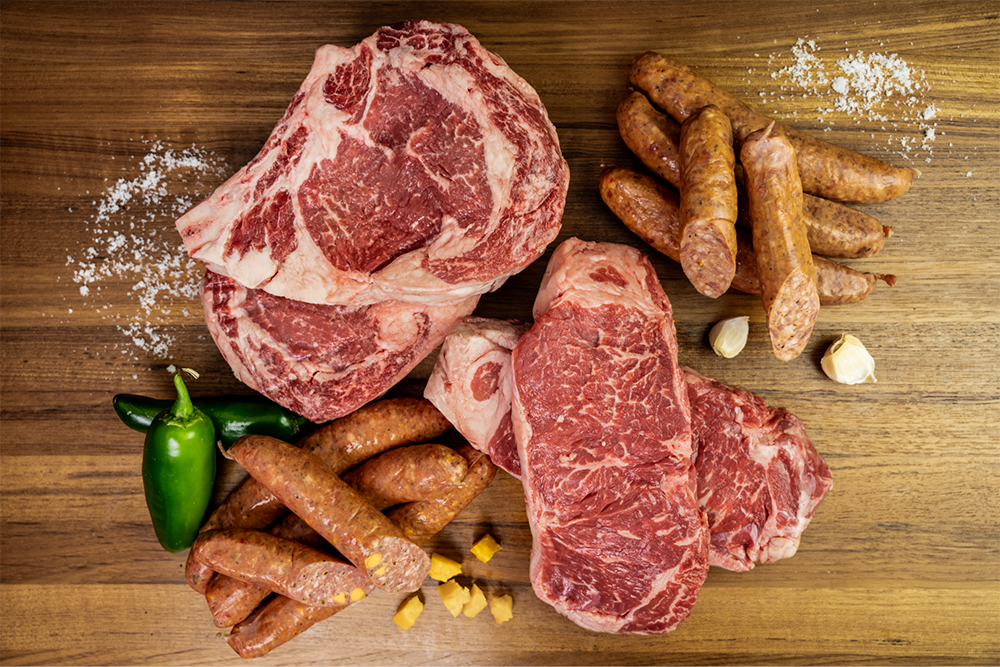Reveal the Art of the Butcher's Cut in a Modern Meat Market
In the ever-evolving landscape of modern meat markets, the butcher's cut has actually transcended its conventional origins, merging old-time craftsmanship with modern practices. What absolutely sets the modern-day butcher apart is their capability to build a deeper link between customers and the origins of their meat.
Development of Butchery Strategies

The mid-20th century saw butchery techniques further improved by clinical insights into muscle biology and meat aging, boosting both inflammation and taste. Innovations like vacuum cleaner product packaging and refrigeration prolonged product shelf-life, permitting butchers to branch out offerings and enhance quality assurance. This period additionally marked the rise of customized devices, such as band saws and meat slicers, which enhanced precision and performance in meat processing.
The 21st century has actually introduced electronic innovation into the butchery world. Electronic systems currently help in tracking pet provenance and enhancing cuts to fulfill certain customer choices. Furthermore, a resurgence in artisanal butchery has actually emerged, mixing conventional abilities with contemporary knowledge to deal with consumers seeking moral and sustainable meat alternatives. This development emphasizes a dynamic interaction between practice and development, conference contemporary needs while preserving the craft's heritage.

Understanding Meat Cuts

Understanding the intricacies of meat cuts is important for both butchers and consumers seeking high quality and value. Each cut comes from a different part of the animal, passing on distinct flavors, structures, and cooking approaches. Proficiency of these differences not just improves culinary experiences yet additionally makes best use of the energy of each carcass. For butchers, accurate cuts reflect skill and respect for the craft, ensuring minimal waste and optimum return.
The main groups of meat cuts include primitive, sub-primal, and retail cuts. Primal cuts, such as the loin, rib, and chuck, are the huge sections originally separated from the carcass. Butchers after that break these down better into sub-primal cuts, prior to finally generating retail cuts available to customers, like ribeye or tenderloin. Each stage needs mindful interest to physiological structure and muscular tissue structure.
Understanding muscle mass make-up is essential; muscles made use of much more often by the animal tend to be harder and are best matched for slow cooking techniques, while less-used muscular tissues, like those found in the loin, are much more tender and suitable for cooking or roasting. Familiarity with these distinctions equips consumers to make enlightened selections, enhancing their culinary endeavors.
Selecting Quality Meat
Choosing the right meat involves greater than simply selecting an aesthetically enticing item from the display screen. The art of picking high quality meat needs a discerning eye and knowledge of specific attributes that signify quality and quality. Pay attention to the shade; beef must have about his a brilliant, cherry-red shade, while lamb should show a soft pink tone, and pork a light pink. This suggests the meat is fresh and hasn't been subjected to oxygen for too lengthy.
Second of all, think about the marbling, which refers to the white streaks of fat within the muscle. Correct marbling is a crucial indicator of tenderness and taste, as it melts throughout cooking, boosting the meat's juiciness. Bear in mind, higher marbling usually correlates with premium high quality cuts, such as USDA Prime.
Appearance is another critical variable; meat ought to really feel firm to the touch, not slimed or overly soft. Furthermore, bear in mind the fragrance. Fresh meat needs to have a clean, neutral odor, without any type of sour or repulsive odors.
Combining Cuts With Cooking Techniques
Efficiently pairing cuts of meat with the proper food preparation methods is necessary for achieving optimal flavor and appearance. Different cuts vary in tenderness, marbling, and connective cells web content, each requiring details techniques to unlock their capacity. Tender cuts like filet mignon and ribeye, with their inherent marbling, benefit from high-heat, quick-cooking techniques such as barbecuing or pan-searing. These techniques boost the meat's all-natural tastes and ensure a juicy finish.
Alternatively, harder cuts like brisket and chuck roast are abundant in collagen, which damages down into gelatin when cooked slowly. These cuts are perfect for braising or slow roasting, allowing the meat to tenderize over time and create deep, intricate tastes. Cuts such as short ribs and pork shoulder make out well with slow-cooking approaches, where expanded cooking times change their robust textures right into delicious meals.
Lamb shanks and oxtail, which require prolonged food preparation to soften, are ideal candidates for cooking or sluggish simmering. These techniques coax out rich, passionate tastes while preserving moisture. By understanding the one-of-a-kind features of each cut, chefs and home cooks alike can elevate their cooking developments, making sure each meal is both satisfying and memorable.
The Butcher's Role Today
Navigating the advancing landscape of the contemporary meat market, the butcher's role today prolongs beyond plain prep work of cuts. Contemporary butchers are culinary artisans, educators, and advocates for lasting methods.
In addition to crafting accurate cuts, butchers currently engage directly with consumers, providing cooking suggestions and tailoring choices to match individual requirements and choices. Their experience in meat aging, marbling, and flavor profiles equips customers to make informed decisions, improving their cooking experiences. This personalized service exhibits the butcher's advancing role as a trusted consultant in the cooking area.
Moreover, butchers are critical in lessening waste, making use of entire animals to create diverse items such as sausages and supplies - bagley farms meat web market edwardsville il. This comprehensive approach not only values the pet but also lines up with modern sustainability objectives. In this way, the contemporary butcher symbolizes both practice and technology, adapting to an ever-changing market while protecting the creativity and stability of their craft

Conclusion
The contemporary butcher's craft delicately weaves standard techniques with modern-day advancements, highlighting lasting methods Get More Information and ethical sourcing. Proficiency in comprehending varied meat cuts and high quality indicators encourages butchers to offer enlightened suggestions, aligning certain cuts with optimal food preparation methods. This proficiency not just elevates cooking experiences but likewise strengthens the link between consumers and the beginnings of their food. By honoring historic practices while accepting modern demands, the butcher's duty stays essential in today's advanced meat market.
Comments on “What Makes Bagley Farms Meat Market Edwardsville IL Stand Apart for Meat Lovers”